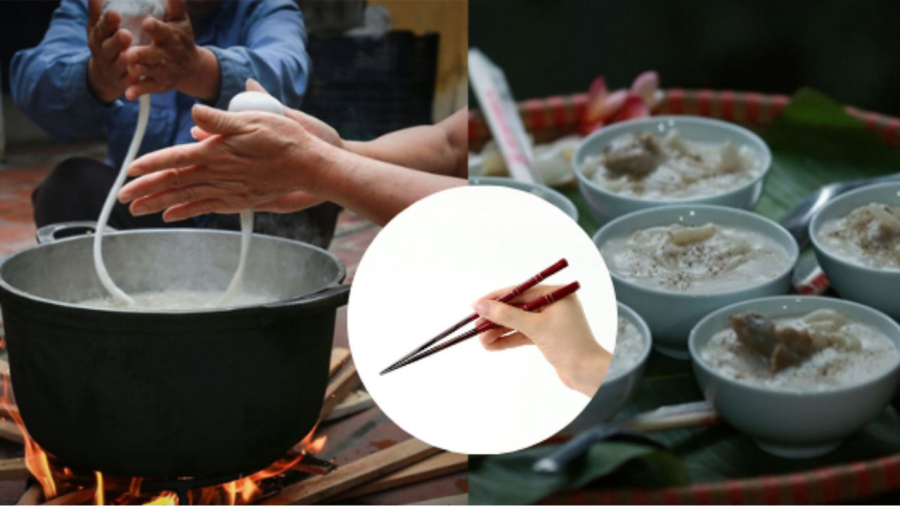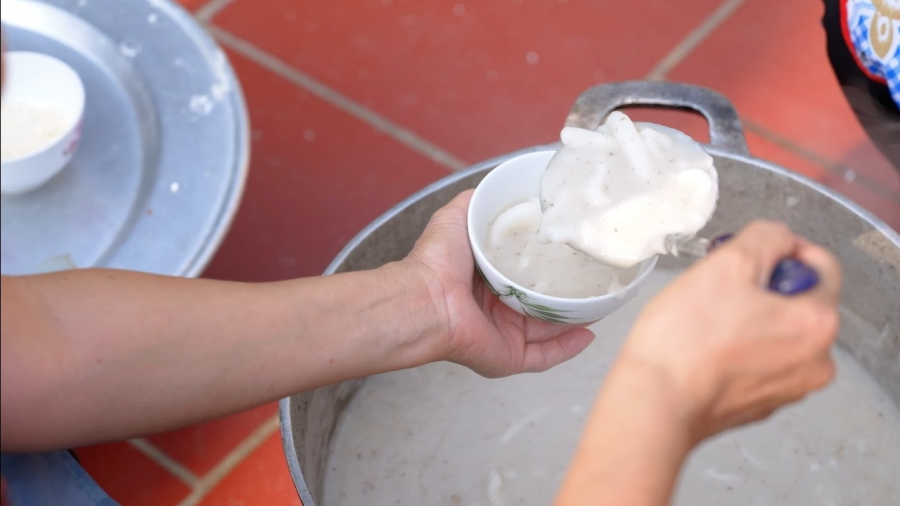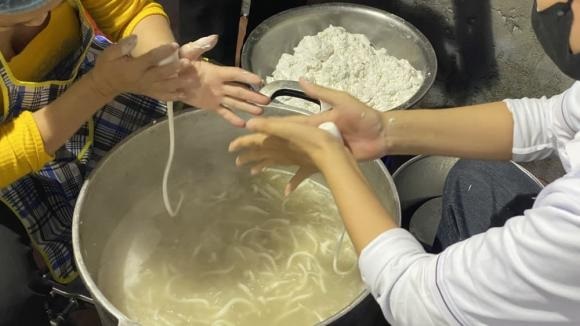When it comes to porridge, many people immediately think of a dish made from rice or rice flour. The characteristic of porridge is that it is quite thin so that it can be easily scooped with a spoon. However, when you visit Hạ Mỗ village, Đan Phượng district on the outskirts of Hanoi, you will witness a very special style of eating porridge. Instead of using a spoon, you will use chopsticks to eat.

Se rice porridge is made from two ingredients: ordinary rice and pork bones. The ingredients are simple, somewhat similar to other types of porridge, but the process of making se rice porridge is very meticulous to achieve the final result.
To make “se”, the cook must choose good quality ordinary rice (when cooked, the rice is slightly dry), soak it in cold water for about 12 hours. After soaking, the soft rice will be ground into rice water. Then, the cooks will filter the ground rice water through a cloth or put it in a thick cloth bag and hang it up high. When the water is completely drained, only the white, soft, dough-like layer of rice flour remains, which is the se dough for making se rice porridge.
The two hands of the cook will knead the dough to make the flour flow into the boiling water pot.
Since there is a lot of flour and the water boils quickly, this step requires the assistance of two or three people working together. The dough strands are dropped into the pot one by one without clumping or sticking together. Occasionally, a gentle stir with chopsticks is needed to ensure that the strands of dough are cooked evenly.

After just a few minutes, the dough strands are evenly cooked, but they are not ready to be eaten right away. The cook will add a small amount of diluted flour (the portion of flour that has been set aside earlier) into the porridge to give it a smoother texture. The way to tell if the dough is cooked is that it has a white color inside and no flour core. Finally, the cooked and fragrant minced pork is added to the pot and seasoned according to taste.
In addition to the “se” dough, the broth used to cook the porridge is also an element that creates the delicious flavor of this dish. Pork bones can be used in the broth, but the best choice is tail bones. The bones are simmered for about two to three hours, resulting in a sweet and clear taste. The meat used in se rice porridge is filtered from the simmered bones, finely chopped, and stir-fried with dried onions and a few spices.

And that’s it, the dish is complete. Enjoy it while it’s hot to fully experience the fragrant and rich taste of se rice porridge. The porridge will be more flavorful if a pinch of ground pepper and scallions are added as they give it a strong aroma. Properly eating se rice porridge is to eat and blow at the same time to fully appreciate the sweet and clear taste of the simmered bone broth combined with the chewy dough.
Currently, the people of Hạ Mỗ still maintain this rich culinary tradition. It appears at festivals, weddings, village gatherings, and is served as a unique appetizer.






























